
APPLICATIONS:
The list below is the possible applications for the STR Units. Click the appropriate button to get more details on the twelve applications..
8. Line De-Icing & Prevention
Measurements:
Option A STR Units measure ambient temperature, solar radiation, conductor temperature, line sag, line current, humidity, and barometric pressure. In addition, Option A Transmission STR Units measure tower tilt, conductor swing, broken conductor, and conductor vibration conditions.
Calculations:
The STR Units h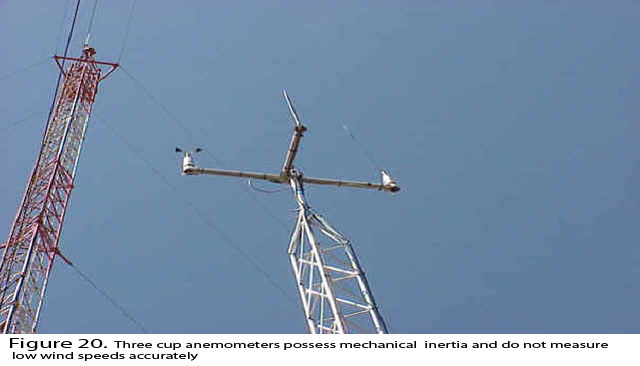 ave a unique patented method of measuring the effective wind velocity from 0.5 mi/h to
135 mi/h that does not rely upon mechanical anemometers. Conventional mechanical 3 or 4 cup anemometers have inertia and cannot accurately measure wind speeds below 1.3 mi/h. See Figure 20.
Most anemometers only measure wind in a horizontal plane, and tend to freeze up during sleeting rain conditions. The STR Unit employs a method that has no mechanical inertia in measuring the wind speed, thus it measures speeds accurately down to 0.5 mi/h, incorporates the effects of combined horizontal and vertical components of wind, and does not freeze up under freezing rain conditions.
ave a unique patented method of measuring the effective wind velocity from 0.5 mi/h to
135 mi/h that does not rely upon mechanical anemometers. Conventional mechanical 3 or 4 cup anemometers have inertia and cannot accurately measure wind speeds below 1.3 mi/h. See Figure 20.
Most anemometers only measure wind in a horizontal plane, and tend to freeze up during sleeting rain conditions. The STR Unit employs a method that has no mechanical inertia in measuring the wind speed, thus it measures speeds accurately down to 0.5 mi/h, incorporates the effects of combined horizontal and vertical components of wind, and does not freeze up under freezing rain conditions.
Applications:
Measured weather data from the STR Units can be used to determine the current required to thaw the line ice, and over what period of time the line ice will be thawed, as well as determine the current necessary to prevent ice from forming on the lines.
The Powernostics® Software algorithms, which were developed over the last 42 years 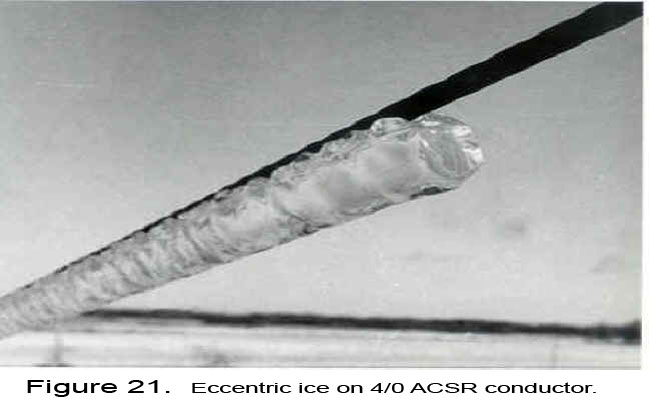 are based on actual laboratory test data, and field conditions during ice storms, determine the magnitude of current to thaw ice and the thaw time, knowing the ambient temperature, effective wind, ice formation type and shape, ice thickness, type of conductor (copper, aluminum,
are based on actual laboratory test data, and field conditions during ice storms, determine the magnitude of current to thaw ice and the thaw time, knowing the ambient temperature, effective wind, ice formation type and shape, ice thickness, type of conductor (copper, aluminum, 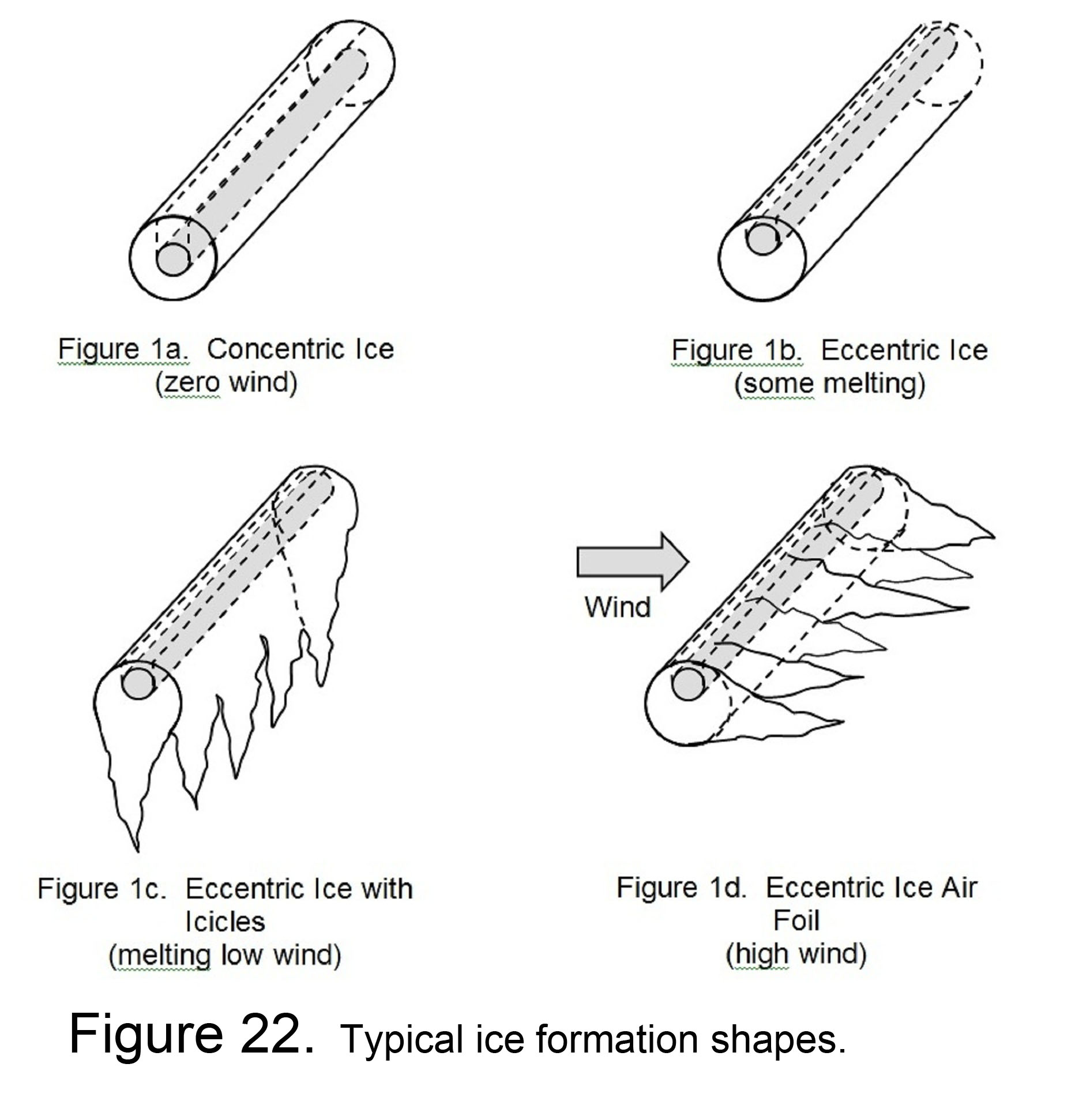 ACSR, Copperweld, etc.), and inches of snow fall. See Figures 21,22 and 23.
ACSR, Copperweld, etc.), and inches of snow fall. See Figures 21,22 and 23.
Two methods, a More Accurate Method and a Simplified Method of performing these calculations are presented in the Software output. See an example in Figure 24. Also, the Software calculates the ice prevention current based on the specific ambient conditions the line is experiencing in real time.
Benefits: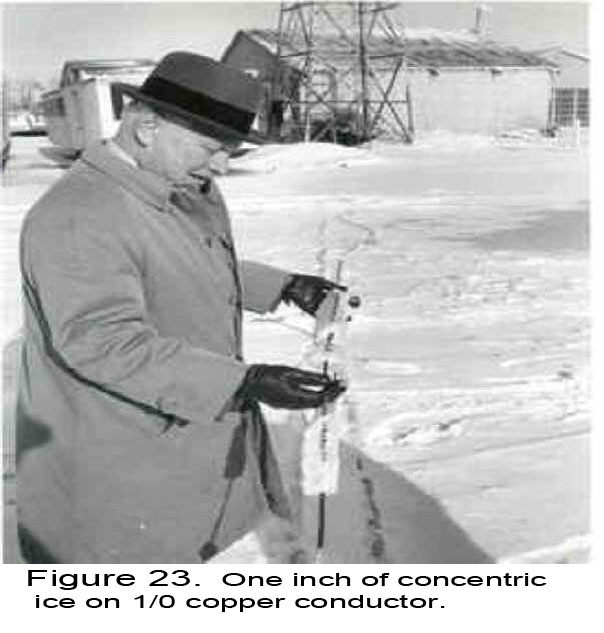
- Since the STR Units measure the line sag, the Software can determine if line clearances are exceeded as the ice builds up on the line conductors. Also, the real time line sag measurements monitor the effect of the line thawing process on line clearances.
- The most important benefit is the Software calculates the ice prevention current which avoids ice being formed and thus prevents significant damage to poles, towers, line conductors, and cross arms and braces, that would have occurred had the ice built-up on the line conductors and structures. See Figure 25.
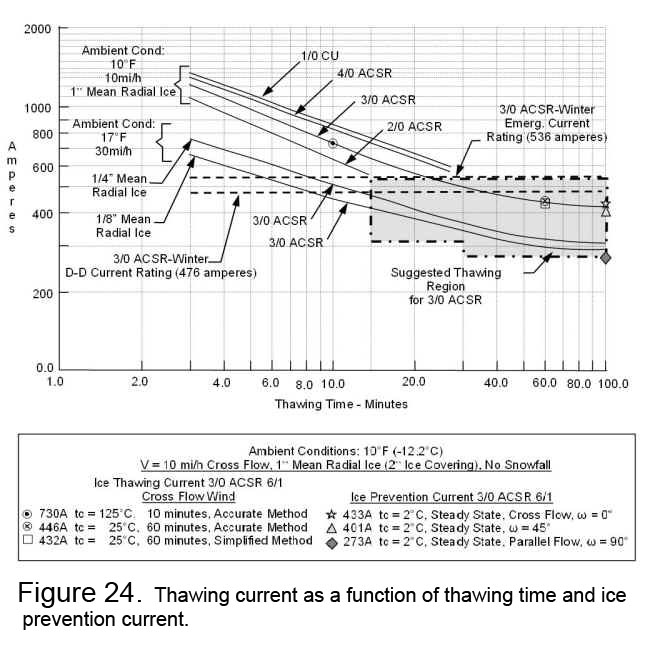
- Since this Software calculates the magnitude of current necessary
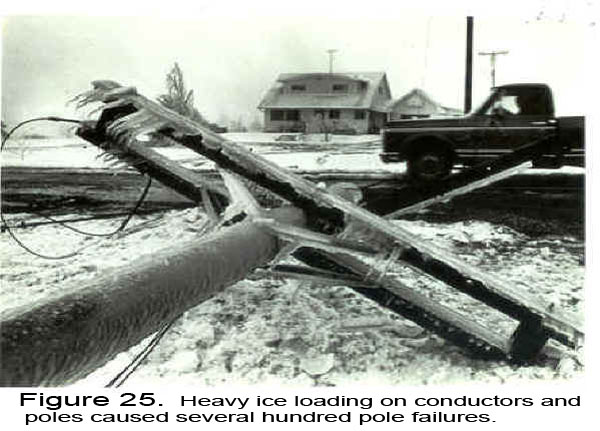 to de-ice lines and the current magnitude required to prevent ice from forming on lines, then the equipment and procedure needed to de-ice lines can be pre-arranged which reduces the outage time to perform this function.
to de-ice lines and the current magnitude required to prevent ice from forming on lines, then the equipment and procedure needed to de-ice lines can be pre-arranged which reduces the outage time to perform this function.










